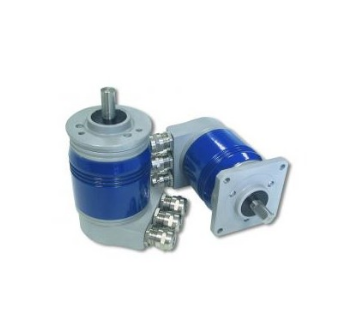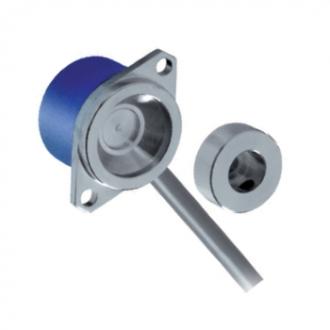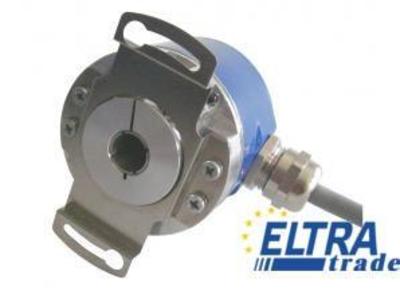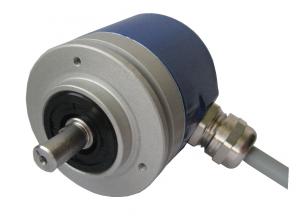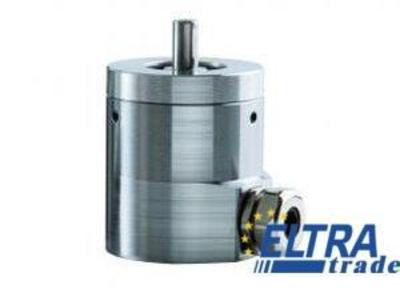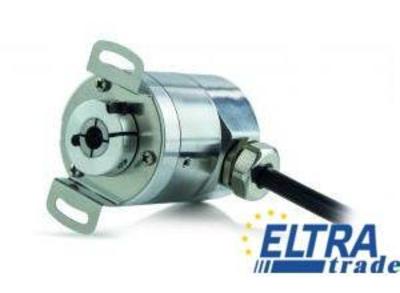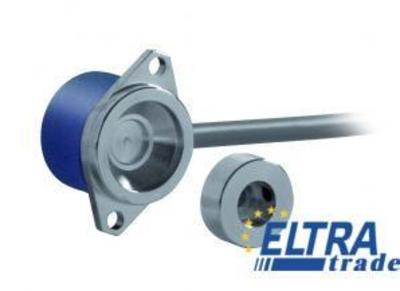Eltra Encoder Magnetic singleturn encoder
Single turn encoder
Single Turn Absolute Magnetic Encoder
Absolute Singleturn Optical Encoder
Absolute Singleturn Optical Encoder
Blind hollow shaft analogue magnetic singleturn absolute encoder.
Solid shaft multi turn absolute encoder Eltra.
Blind Hollow shaft magnetic singleturn absolute encoder.
Blind hollow shaft analogue magnetic single turn absolute encoder.
Blind hollow shaft magnetic singleturn absolute encoder
Singleturn absolute magnetic encoder.
Magnetic singleturn absolute kit encoder with SSI electronic interface.
ELTRA EMA50A8B11/30P6S3PR.592
Singleturn absolute magnetic encoder.
Several mechanical flanges.
Eltra Magnetic Encoders
Eltra Magnetic Encoders are devices designed to measure a mechanical system's position, speed, and direction of rotation. They utilize magnetic technology to achieve accurate and reliable measurements. Let's learn more about what a single-turn magnetic encoder is.
Features of Eltra Magnetic Encoders
Here are some features associated with Eltra magnetic encoders.
Magnetic technology
Eltra magnetic encoders use magnetic fields to detect and measure the position of a rotating shaft. This technology is known for its reliability and precision.
Non-contact sensing
Each single turn encoder operates on a non-contact principle, meaning there is no physical contact between the sensing elements and the moving parts. This reduces wear and tear, resulting in longer life and higher reliability.
High resolution
These devices often provide high resolution, allowing precise measurements and control of the rotational position. This is essential in applications where accuracy is critical.
Robust design
Such equipment is generally robust and resistant to environmental factors such as dust, dirt, and moisture. This makes them suitable for various industrial applications.
Compact size
Eltra cares about the size of the devices they produce, so encoders are compact, making them suitable for applications with limited space.
Wide temperature range
Magnetic encoders can operate within a wide temperature range, making them suitable for indoor and outdoor applications.
Incremental and absolute options
Such devices are available in incremental and absolute configurations, providing flexibility in application requirements.
Benefits of Eltra Magnetic Encoders
Now let's look at the benefits that you can get if you use magnetic encoder solutions.
High accuracy
Magnetic encoders offer high accuracy in position and speed measurements, making them suitable for applications that demand precision.
Reliability
The non-contact nature of magnetic encoders contributes to their reliability, as there is less wear and tear on components.
Longevity
The robust design and non-contact sensing contribute to the longevity of magnetic encoders, reducing maintenance requirements and downtime.
Versatility
Magnetic encoders are versatile and can be used in various industries such as manufacturing, automation, and robotics.
Easy installation
Eltra magnetic encoders are designed for easy installation, making them user-friendly and reducing the time required for setup.
Cost-effectiveness
While the initial cost may vary, magnetic encoders' long lifespan, reliability, and accuracy often result in cost savings over time due to reduced maintenance and downtime.
Applications of Magnetic Singleturn Encoders
Absolute single turn magnetic encoders find applications in various industries and scenarios where accurate and reliable measurement of rotational position is crucial. Here are some of them.
Industrial automation
Magnetic single-turn encoders are widely used in industrial automation systems, including manufacturing equipment, conveyor systems, and robotic arms. They help accurately determine the position of moving parts and facilitate precise machinery control.
Machine tools
In machine tools such as milling machines, lathes, and CNC (Computer Numerical Control) machines, magnetic single-turn encoders provide accurate feedback on the position of the tool or workpiece. This ensures precision in machining processes.
Packaging machinery
Magnetic encoders play a vital role in packaging machinery, where precise packaging process control is essential. They help determine the position of packaging materials and ensure proper sealing, labeling, and other packaging operations.
Medical equipment
These encoders are utilized in medical equipment, such as diagnostic devices, robotic surgery systems, and imaging equipment. Their accuracy is critical in maintaining the precision required for medical procedures and diagnostics.
Renewable energy systems
In renewable energy applications, such as wind turbines and solar tracking systems, magnetic single-turn encoders assist in tracking the position of components like blades or solar panels. This helps optimize energy harvesting and control the orientation of renewable energy systems.
Automotive industry
Such devices are used in various automotive applications, including electric power steering systems, throttle control, and transmission systems. They provide accurate feedback for control systems, contributing to overall vehicle performance and safety.
Aerospace and defense
Magnetic encoders are employed in aerospace and defense applications, such as aircraft control, navigation, and radar systems. Their reliability and accuracy are crucial in maintaining the precision required for aerospace operations.
Printing industry
In printing machinery, magnetic encoders help control the movement of print heads and paper, ensuring accurate positioning during the printing process. This is vital for maintaining print quality and consistency.
Textile machinery
Textile manufacturing machinery relies on accurate position feedback for spinning, weaving, and knitting processes. Magnetic encoders help control the movements of various components, contributing to the efficiency of textile manufacturing.
Elevator systems
Industrial encoders are used in elevator systems to control the position of the elevator car precisely and ensure accurate floor leveling. This enhances safety and comfort for passengers.
Installation and Integration of Eltra Encoders
Here is a general guide that can be adapted for many Eltra absolute singleturn magnetic encoders:
- Choose a suitable location for mounting the encoder on the machinery. Ensure that it is securely mounted and aligned with the rotating shaft.
- Clean the shaft where the encoder will be mounted to remove debris or contaminants. Ensure the shaft is smooth and free from any irregularities affecting the encoder's accuracy.
- Attach the encoder to the mounting location using the appropriate hardware provided with the encoder. Make sure it is securely fastened to prevent any movement during operation.
- Proper alignment of the encoder is crucial for accurate measurements. Use alignment tools or procedures to ensure the encoder is aligned parallel to the shaft and centered correctly.
- Connect the encoder cables to the corresponding ports on the control system or interface device. Ensure the connections are secure and adequately seated to prevent signal loss or interference.
- Depending on the specific model of the Eltra Magnetic Singleturn Encoder, you may need to configure specific parameters such as resolution, output format, and communication protocol. Refer to the encoder's datasheet or user manual for instructions on configuring it.
- Once installed and configured, perform thorough testing to ensure the encoder functions correctly. Rotate the shaft manually or using the machinery and verify that the encoder outputs accurate position readings.
- If the encoder is part of a more extensive control system, integrate it with the system according to the manufacturer's instructions. This may involve programming the control system to interpret the encoder signals and use them for feedback or control purposes.
- Some applications may require calibration of the single-turn encoder to ensure accurate measurements. Follow the calibration procedures provided by the manufacturer or consult with a qualified technician if necessary.
- Keep detailed records of the installation process, including configurations or calibration settings. Perform regular maintenance checks on the encoder to ensure continued accuracy and reliability.
